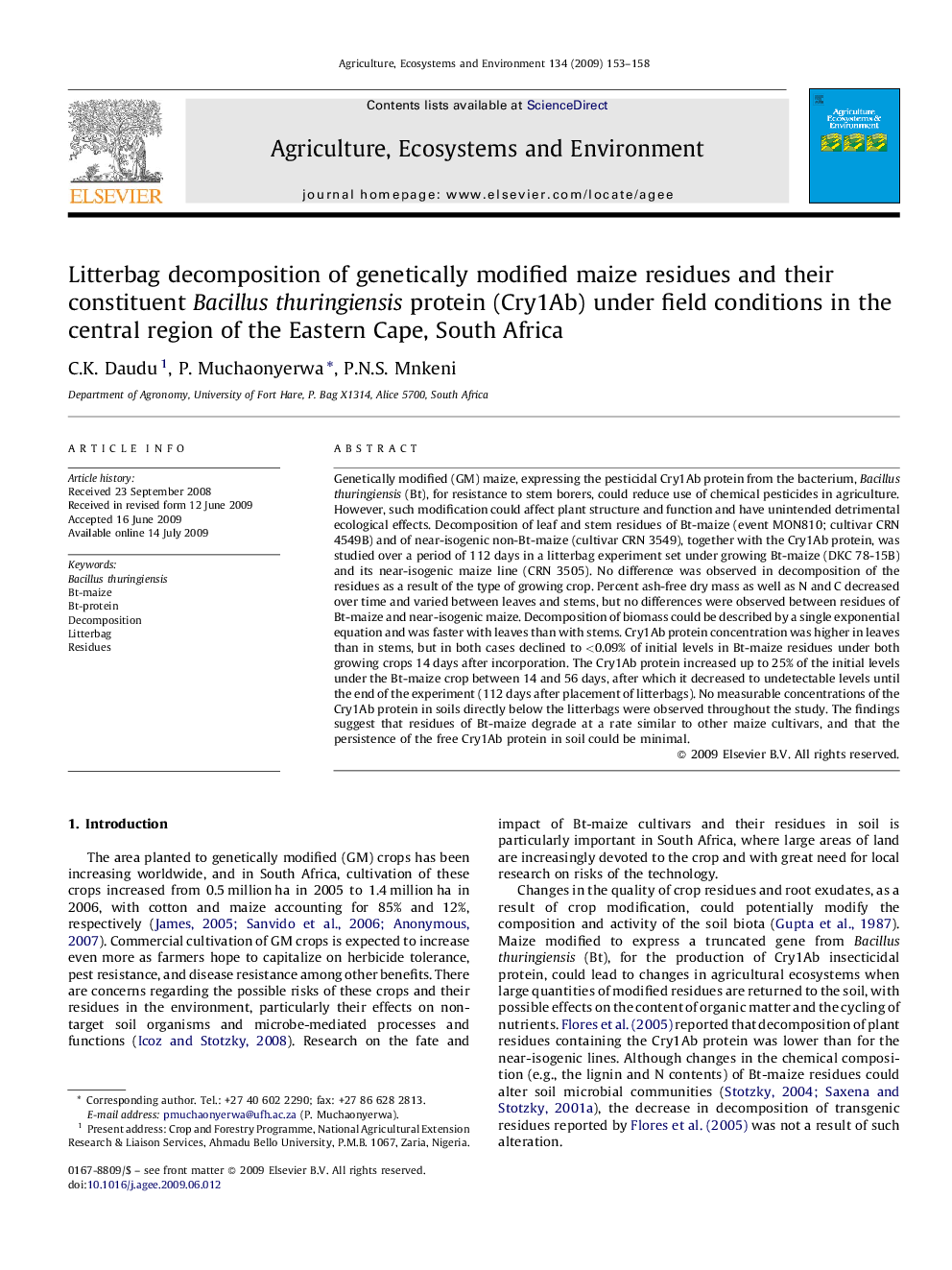| کد مقاله | کد نشریه | سال انتشار | مقاله انگلیسی | نسخه تمام متن |
|---|---|---|---|---|
| 2415256 | 1552120 | 2009 | 6 صفحه PDF | دانلود رایگان |

Genetically modified (GM) maize, expressing the pesticidal Cry1Ab protein from the bacterium, Bacillus thuringiensis (Bt), for resistance to stem borers, could reduce use of chemical pesticides in agriculture. However, such modification could affect plant structure and function and have unintended detrimental ecological effects. Decomposition of leaf and stem residues of Bt-maize (event MON810; cultivar CRN 4549B) and of near-isogenic non-Bt-maize (cultivar CRN 3549), together with the Cry1Ab protein, was studied over a period of 112 days in a litterbag experiment set under growing Bt-maize (DKC 78-15B) and its near-isogenic maize line (CRN 3505). No difference was observed in decomposition of the residues as a result of the type of growing crop. Percent ash-free dry mass as well as N and C decreased over time and varied between leaves and stems, but no differences were observed between residues of Bt-maize and near-isogenic maize. Decomposition of biomass could be described by a single exponential equation and was faster with leaves than with stems. Cry1Ab protein concentration was higher in leaves than in stems, but in both cases declined to <0.09% of initial levels in Bt-maize residues under both growing crops 14 days after incorporation. The Cry1Ab protein increased up to 25% of the initial levels under the Bt-maize crop between 14 and 56 days, after which it decreased to undetectable levels until the end of the experiment (112 days after placement of litterbags). No measurable concentrations of the Cry1Ab protein in soils directly below the litterbags were observed throughout the study. The findings suggest that residues of Bt-maize degrade at a rate similar to other maize cultivars, and that the persistence of the free Cry1Ab protein in soil could be minimal.
Journal: Agriculture, Ecosystems & Environment - Volume 134, Issues 3–4, December 2009, Pages 153–158